The Innovative Minds Who Are Finding Ways to Design For the Greater Good

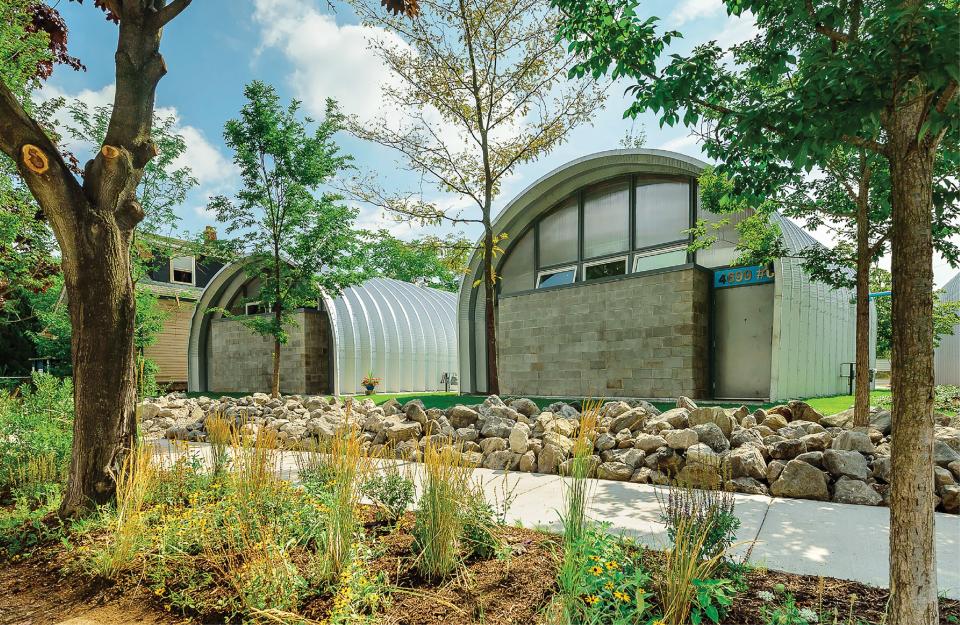
True North
A Detroit enclave reimagines a humdrum structure as progressive, low-cost housing
The Quonset hut is back. At True North, the first new development in Detroit’s Core City neighborhood since the 1960s, Edwin Chan of EC3 has reinvented the World War II military structure as affordable housing for a community of creatives. “There’s a beauty in industrial buildings,” says the architect, who designed eight semicircular galvanized-steel huts with varying profiles, open floor plans, and common green spaces that link the homes. “The challenge was introducing modern design to the neighborhood while respecting its industrial character.” Since its completion in 2017, the complex has inspired adjacent mixed-use and commercial projects, now under way. “I knew from the start that our project would be a catalyst,” states Chan, formerly a partner at Frank Gehry’s office. “It’s the first stone you cast into the pond to create a ripple.” —ELIZABETH FAZZARE
Our Favorite Eco-friendly Finds Put Sustainable Materials to Stylish Use

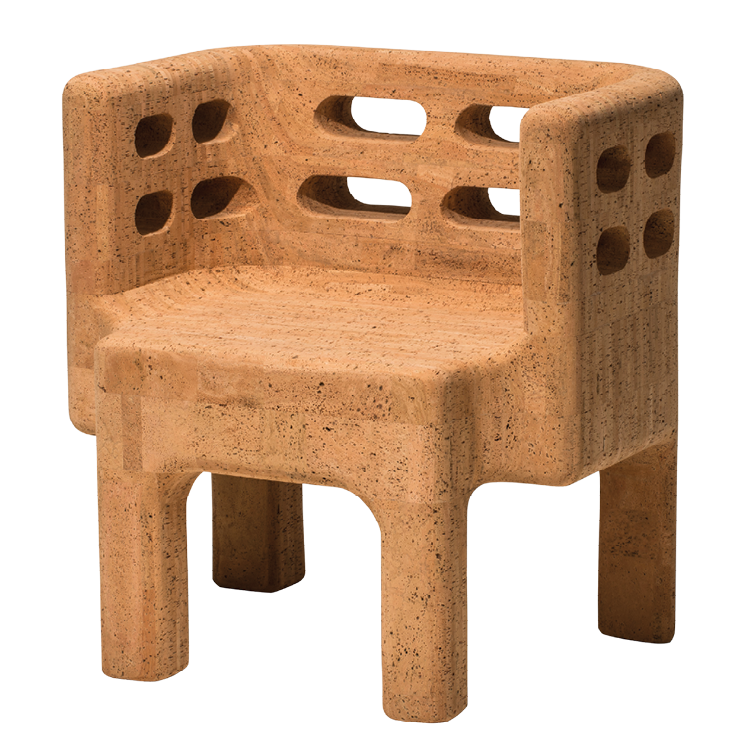
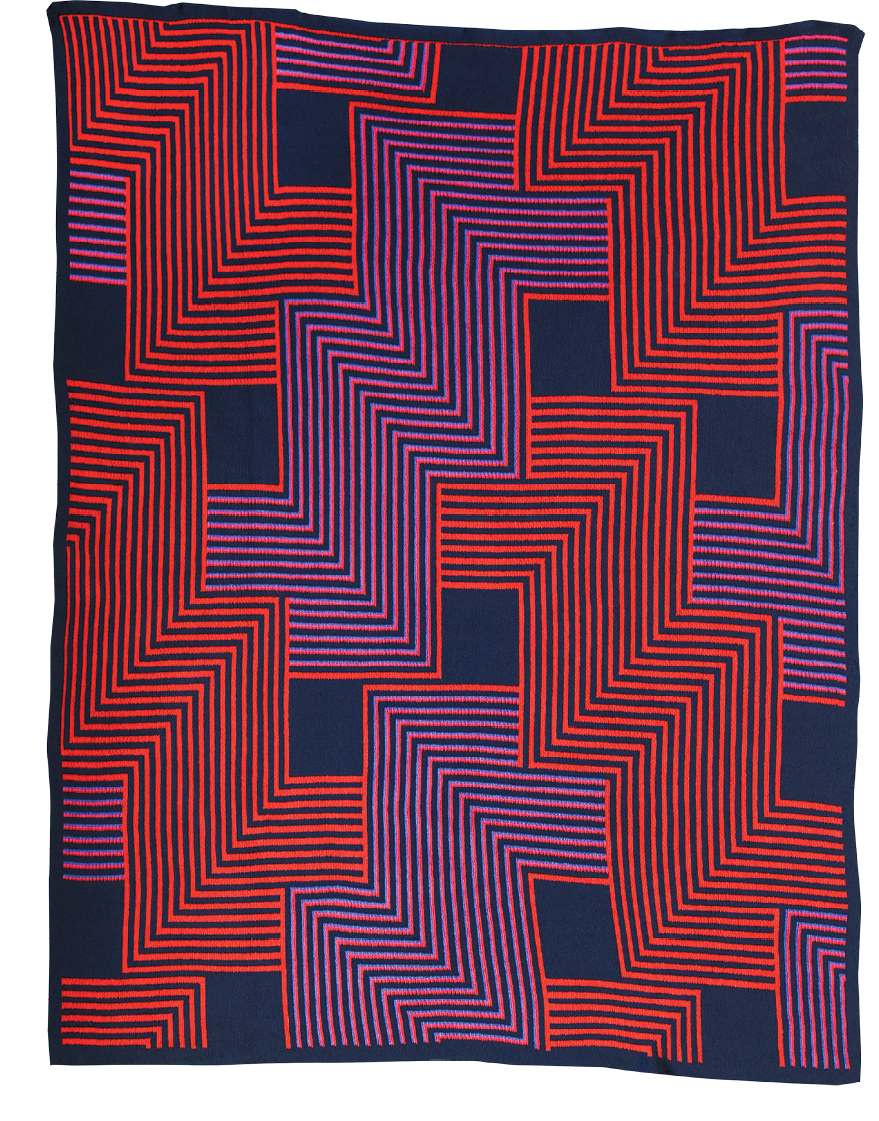

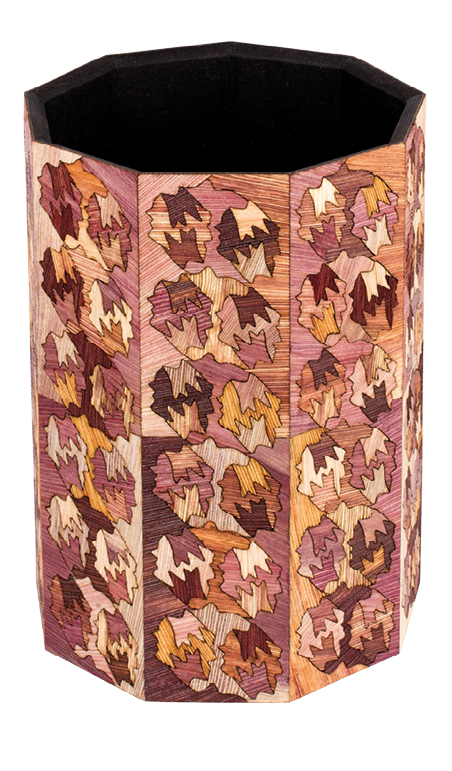
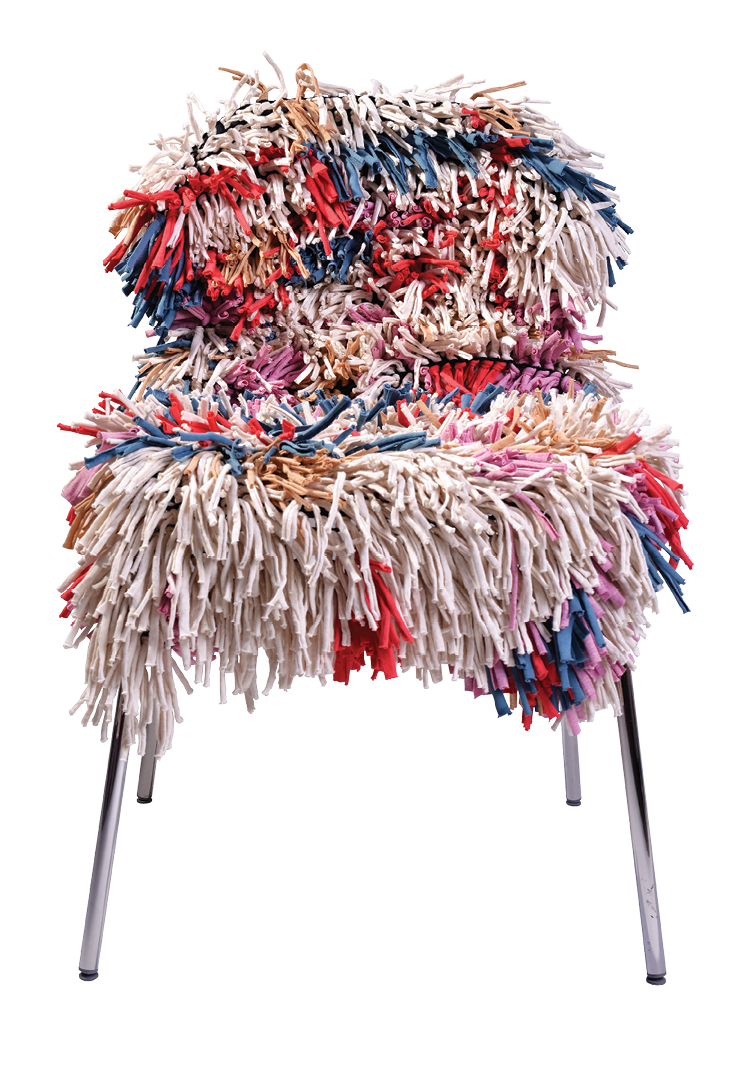
Food for Soul
A culinary nonprofit calls on some creative visionaries to help nourish the body and dazzle the eye
As a planet, we trash 1.3 billion tons of food a year while more than 800 million people remain hungry. Italian chef Massimo Bottura, of three-Michelin-star restaurant Osteria Francescana, and his wife, Lara Gilmore, are trying to change that—one meal at a time—with their innovative nonprofit Food for Soul. At community kitchens or refettorios throughout Italy (as well as in Paris, London, and Rio de Janeiro) chefs such as Alain Ducasse, Clare Smyth, Daniel Boulud, and Bottura himself work with locals to prepare meals for the hungry. What’s more: The spaces have been designed by the likes of AD100 maestro Ilse Crawford, artist JR, and sculptor/painter Mimmo Paladino. “In a world in which so many build walls, we break walls,” explains Bottura. “We say, Welcome, come in.” Now, thanks to a grant from the Rockefeller Foundation, they’re planning to bring the operation Stateside in the next year. foodforsoul.it —HANNAH MARTIN
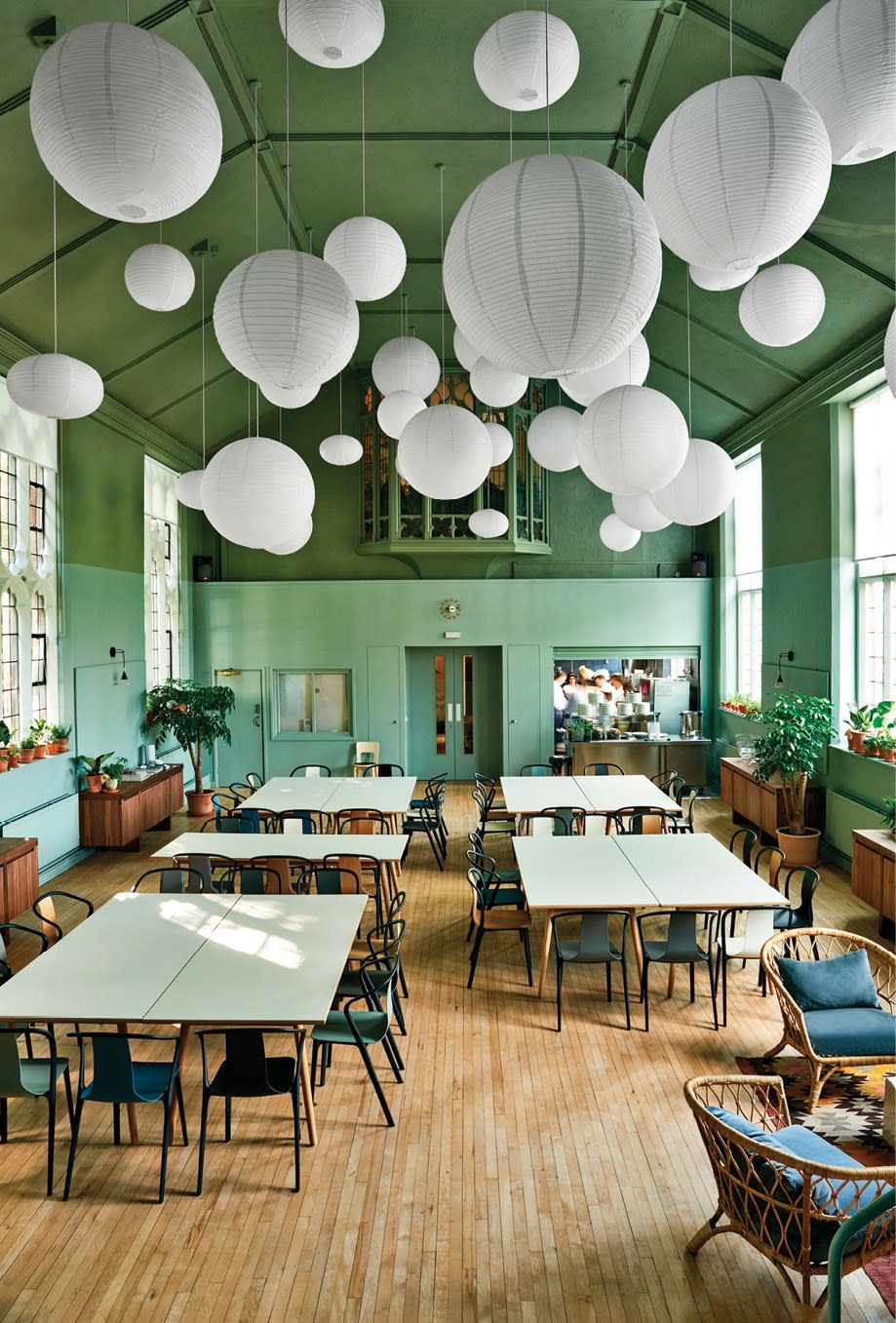
Hunter's Point South Park
A radical stretch of shoreline in Queens, New York, establishes a new model for coastal resiliency
On 11 acres in Long Island City, Queens, design firms SWA/Balsley, Weiss/Manfredi, and Arup have realized something groundbreaking: a waterfront scheme (part architecture, part infrastructure, part landscape) to please crowds and withstand the worst. Completed in two phases over the last decade, Hunter’s Point South Park comprises a network of pathways, lawns, play spaces, and more, much of it on landfill. But embedded within the design are innovations that protect the site from natural disaster. In the event of storm surges, tidal marshes absorb and gently release rising waters, while porous gabion barriers filter storm water from upland streets. It all worked like a charm in 2013, when the project—then nearing completion on phase one—survived Hurricane Sandy. “We knew what was coming,” landscape architect Tom Balsley of SWA/Balsley reflects on the project, the final phase of which was finished this past June. A cantilevered overlook now provides 360-degree vistas, while a peninsula of native plants transforms into an island at high tide. The site is “a 100 percent invented form of nature,” notes architect Marion Weiss of Weiss/Manfredi, adding that the design nonetheless “restores the site’s legacy of exchange, as both an aquatic wetland and a place of industrial invention.” nycgovparks.org —E.F.
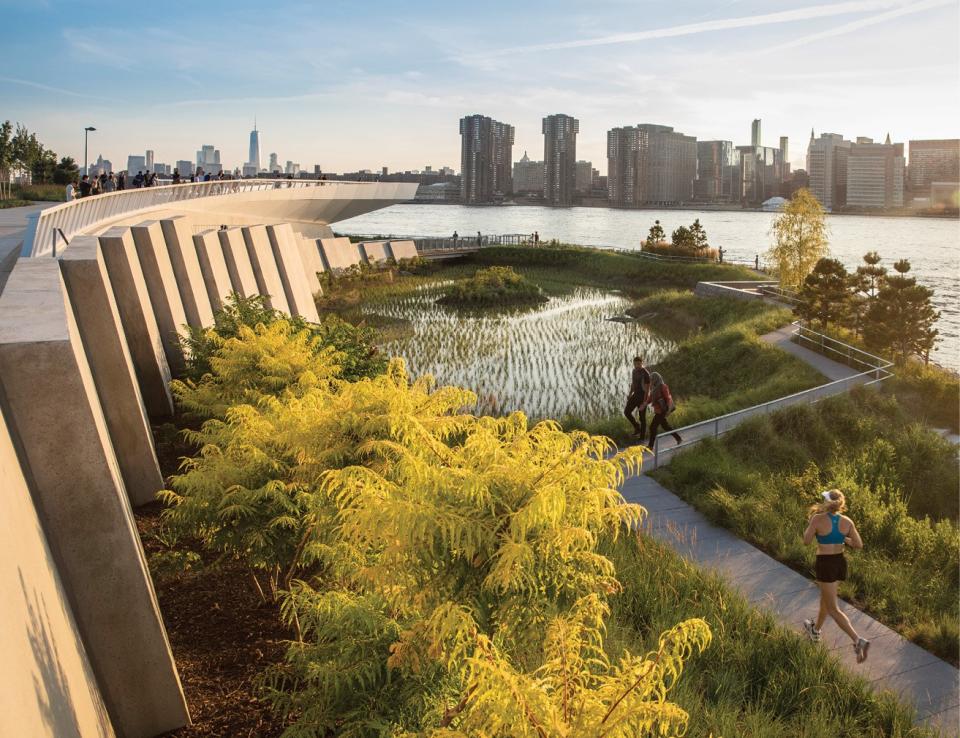
Avasara Academy
In rural India, an eco-friendly, first-of-its-kind campus trains the female leaders of tomorrow
“We wanted to create a sanctuary for learning,” says archi-tect Samuel Barclay of Case Design, the Mumbai-based firm behind the new Avasara Academy outside Pune, India. This progressive boarding school (initiated by The Leadership Foundation of India) was conceived to offer entrepreneurial and managerial coursework to 700 female students, ages 13 to 18. “We knew this would be the first time that many of the women would be away from home,” says Barclay, explaining that safety was a main priority. So too were energy efficiency and low-cost construction. Working with engineering studio Transsolar, the team conceived a net-zero campus of six buildings, each four stories tall, with dormitories stacked above classrooms to ensure day and night use. Solar chimneys provide natural air-conditioning; thermal massing soaks up daytime heat; and bamboo screens shade stairwells and verandas—what Barclay calls “the heart of the school.” Artisanal touches like broken-stone mosaic floors add to its regional character. The first structure was completed in September 2016, followed by two others in the years since. Construction on the remaining buildings will wrap up this summer, with plans for a bamboo gymnasium in the future. avasara.in —E.F.
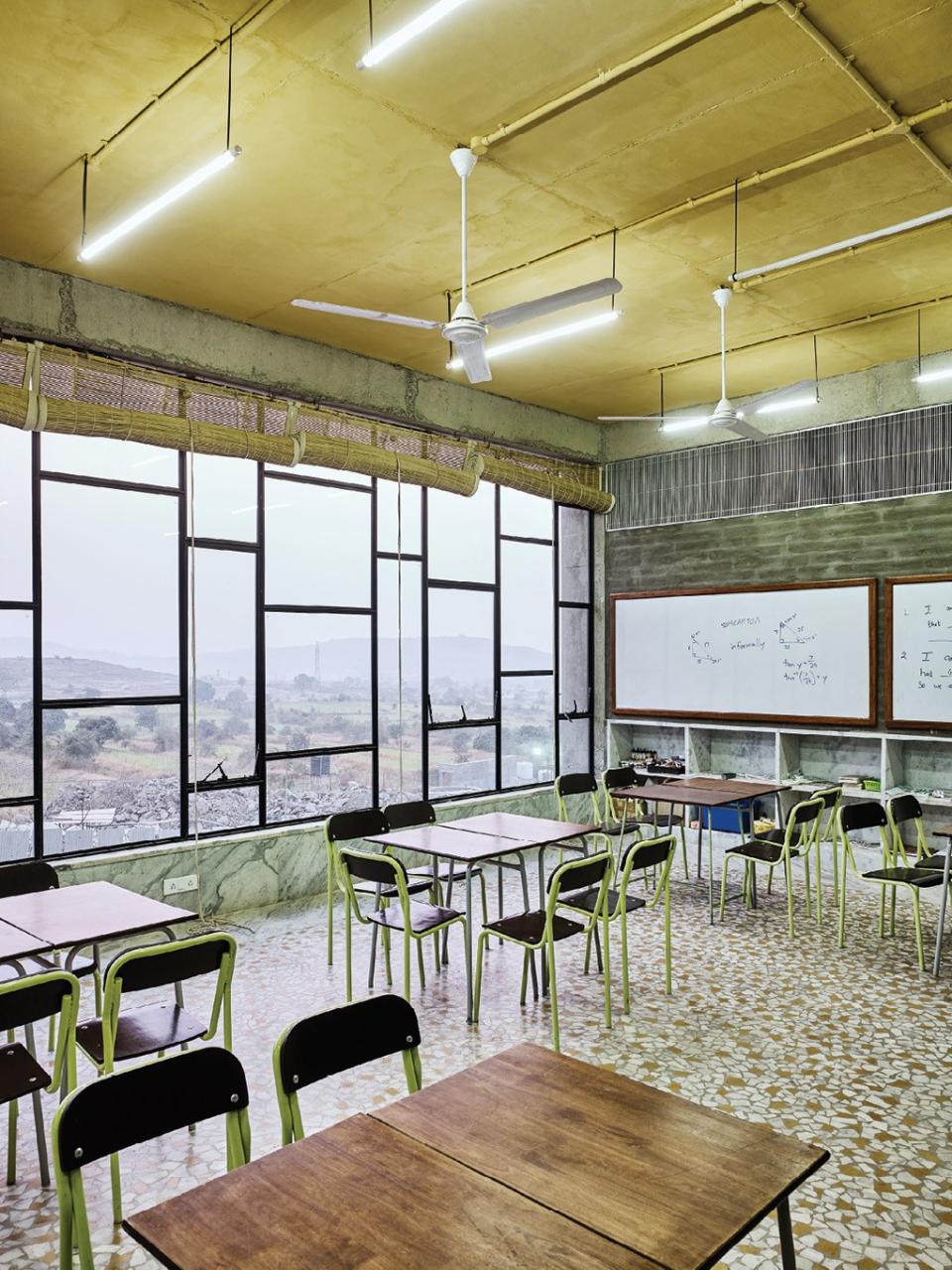
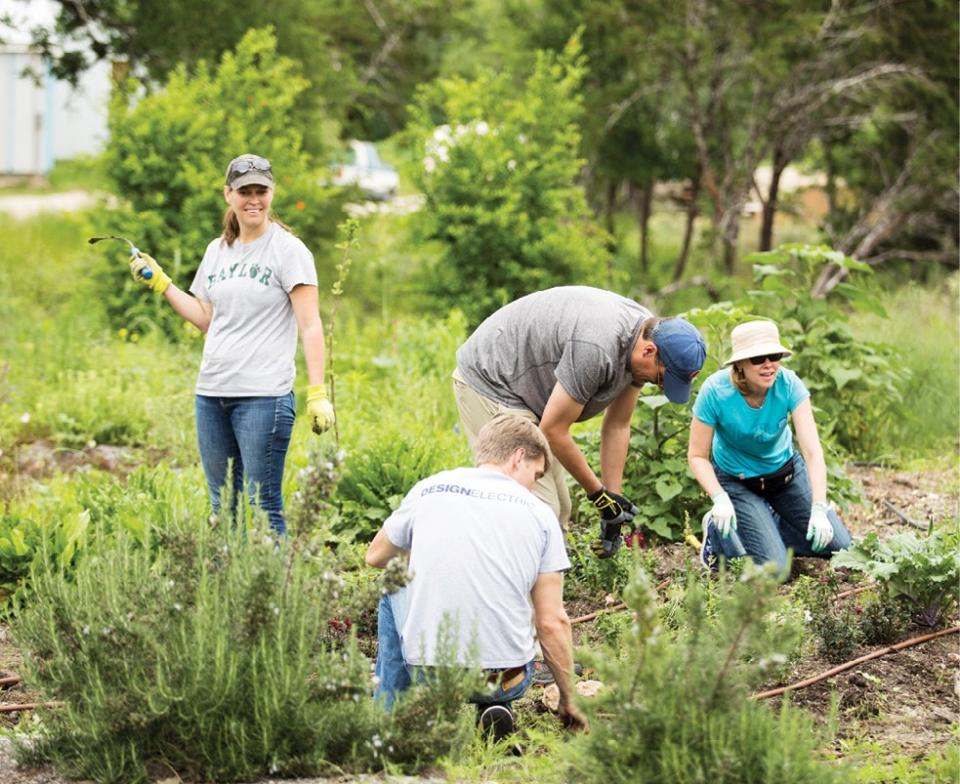
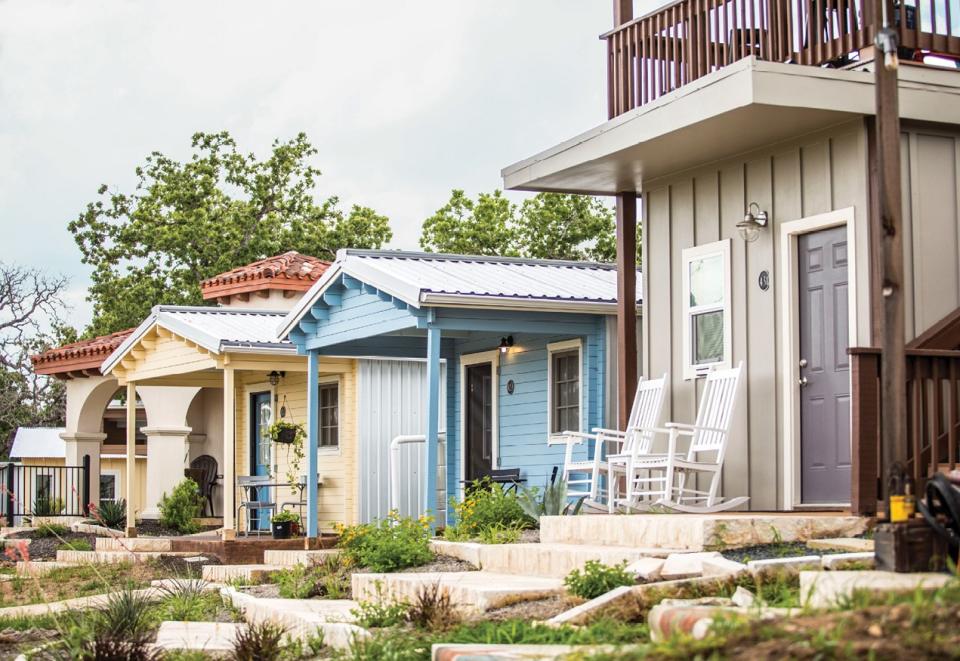
Community First! Village
A neighborhood of tiny houses makes a huge impact on Austin's homelessness crisis
On any given night in Travis County, Texas, some 2,000 people must sleep without shelter—roughly twice the statewide homelessness rate. To alleviate the problem, Mobile Loaves & Fishes, a charity founded by Alan Graham, has turned to architecture. Enlisting Stephen Ross of the Design Build Alliance, and his students at the University of Texas, the nonprofit located a 27-acre site nine miles from downtown Austin and set about conceiving a new neighborhood for those in need. A design competition, launched with AIA Austin, challenged designers to create stand-alone homes in 200 square feet or less. “Small spaces require people to come out and interact,” says Graham, whose idea for tiny houses was inspired by campground living. Select architects have since realized their schemes at Community First! Village. While some homes update historic dogtrot houses for modern living, others emphasize Southern hospitality thanks to rooftop patios. Job training and communal events, meanwhile, are available to all residents—170 and counting. An adjacent 24-acre site is being transformed to host up to 400 more. tinyvictories.org —E.F.
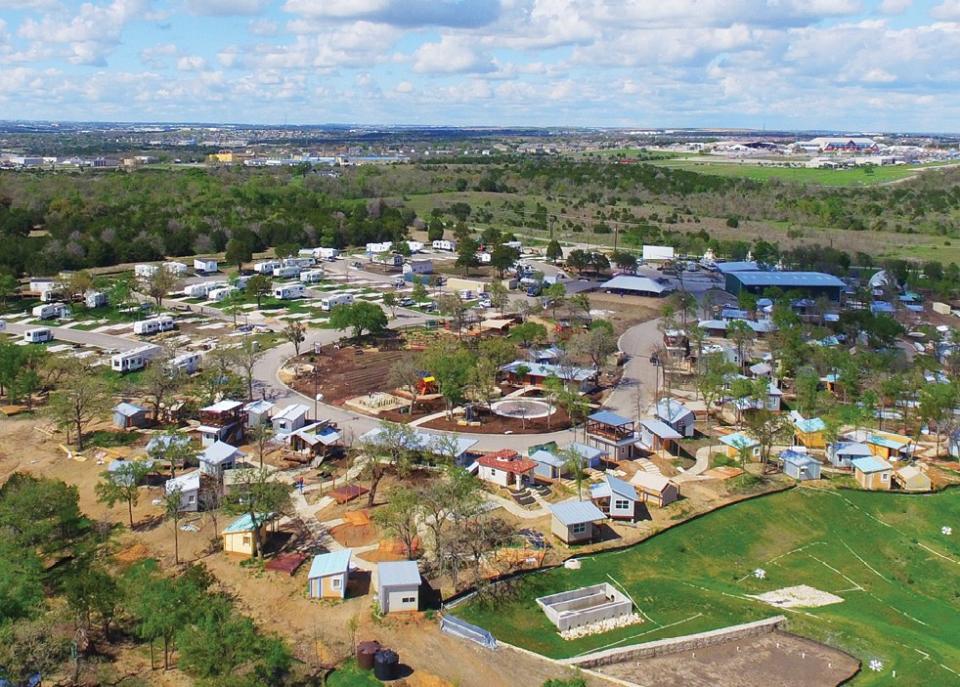
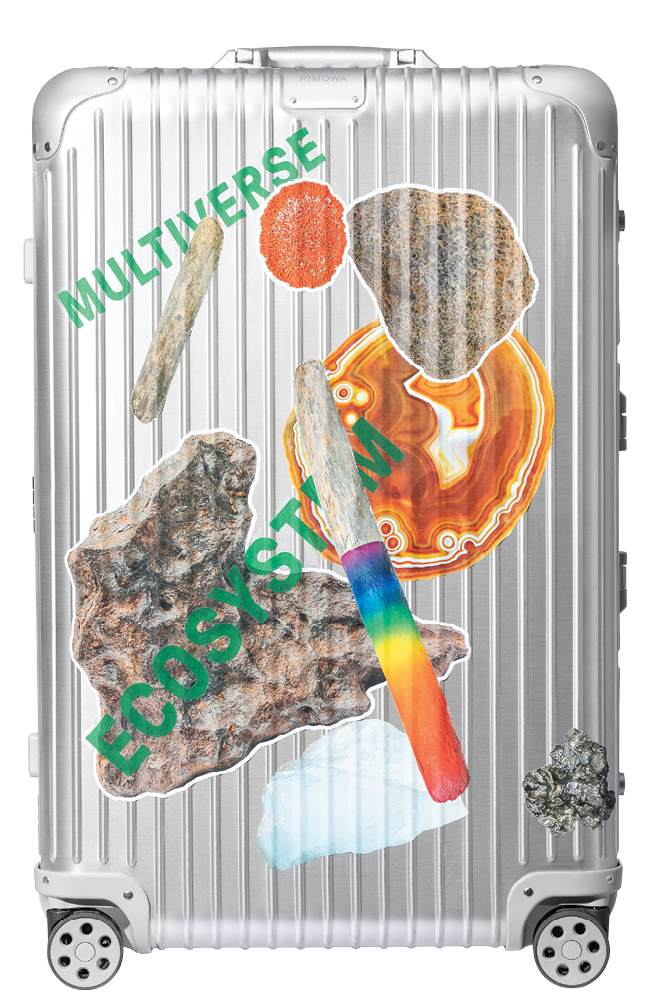
Adhering to Principles
Art star Olafur Eliasson has teamed up with Rimowa to create stickers for a good cause, devising terrestrial designs—lichen-clad stones, driftwood, hypnotic geodes—with which travelers can adorn their luggage (shown is a Check-in M suitcase, in silver; $1,350). Proceeds from the limited-edition, 46-piece box benefit Eliasson’s Little Sun Foundation, which provides affordable solar lights to global communities in need. $340; rimowa.com —CARLY OLSON

